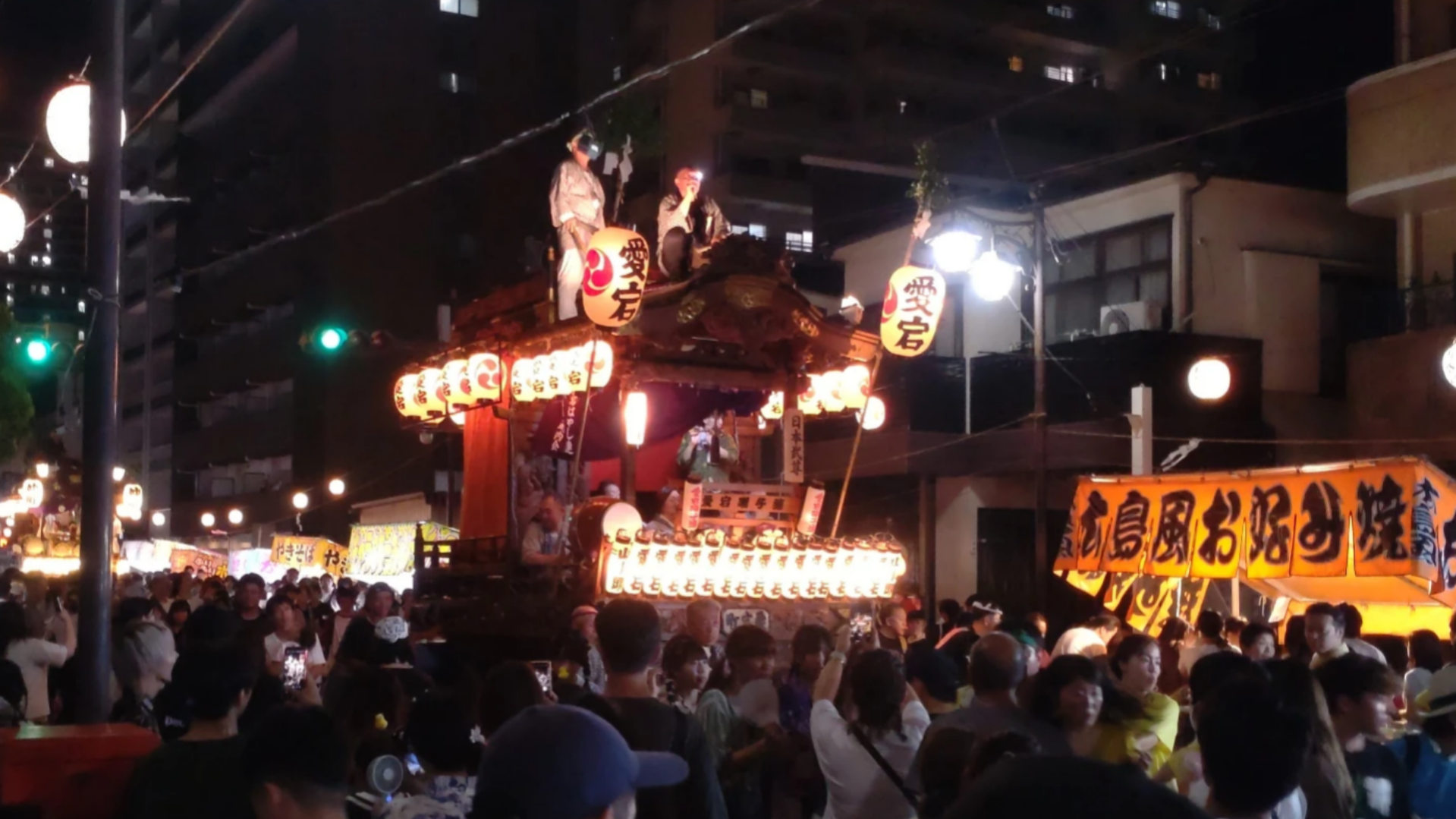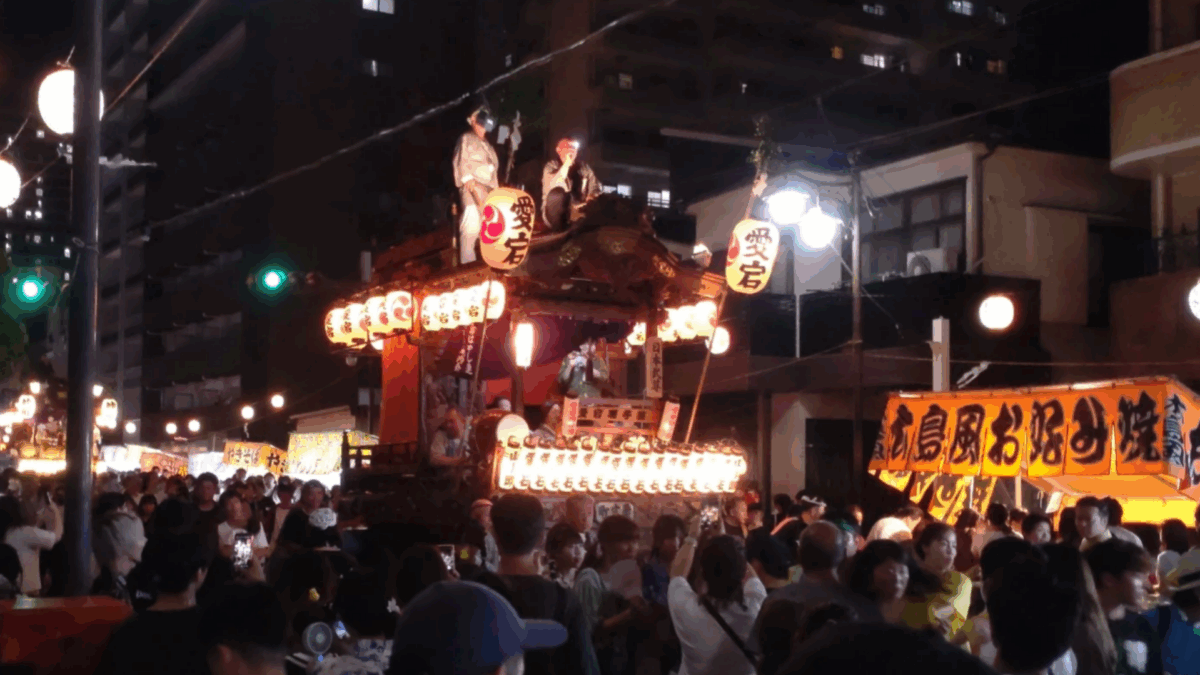
When it comes to Japanese summers, summer festivals, or Natsumatsuri, are definitely the highlight. In my town, the old main street is closed off for a grand summer festival every year.
As summer festival season approaches, shrines and communities across Japan come alive with colorful lanterns and crowds of people gathering for lively celebrations. It’s said that summer festivals originally began as a way to pray to the gods, to ward off epidemics and disasters prevalent in summer, and to pray for bountiful harvests. What started as religious ceremonies to purify the community and pray for people’s safety has now become a beloved summer tradition enjoyed by many.
The Heart of the Festival: Dashi and Mikoshi in Motion
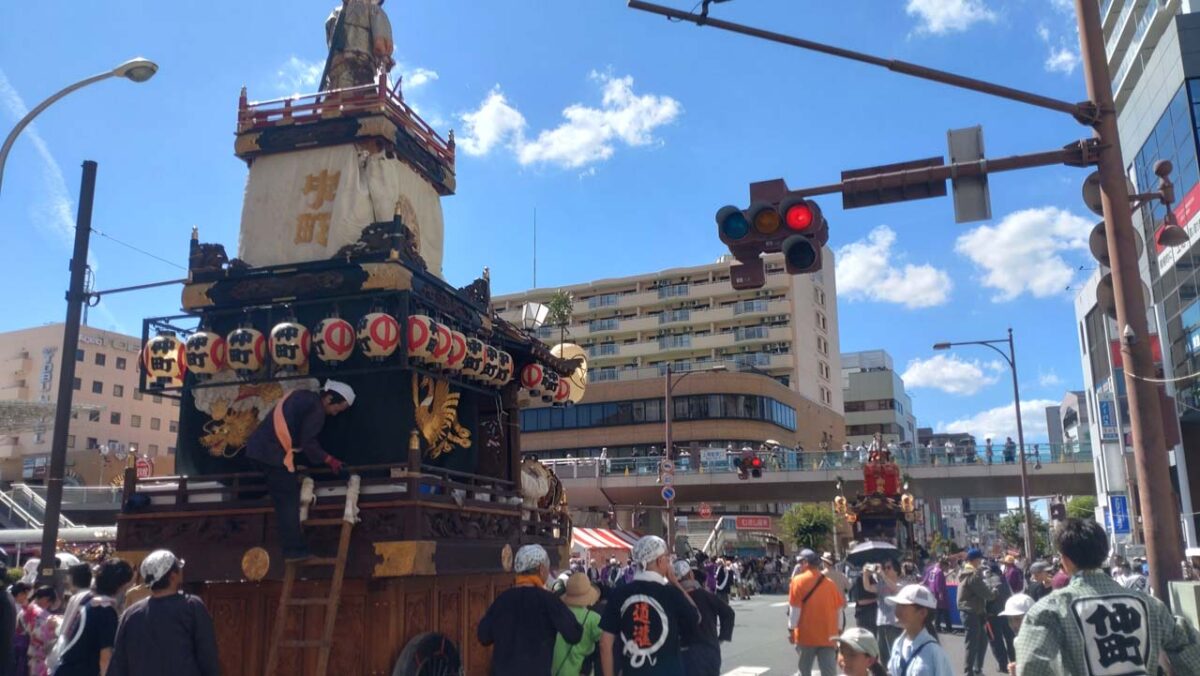
On festival day, elaborately decorated, large floats called Dashi are pulled through the streets, parading around town to the sound of flutes and drums. And then there are the Mikoshi, portable shrines carrying a god, hoisted on the shoulders of men who chant “Wasshoi!” as they sway and move forward. This sight is truly the essence of a summer festival. In ancient Japan, it was believed that various gods existed, so the god enshrined in each Mikoshi and Dashi differs.
And here we are, 2025, and summer festival season has arrived once again! The road where the festival is held is less than a minute’s walk from my apartment, so every year I enjoy the festival to the fullest, from day to night!
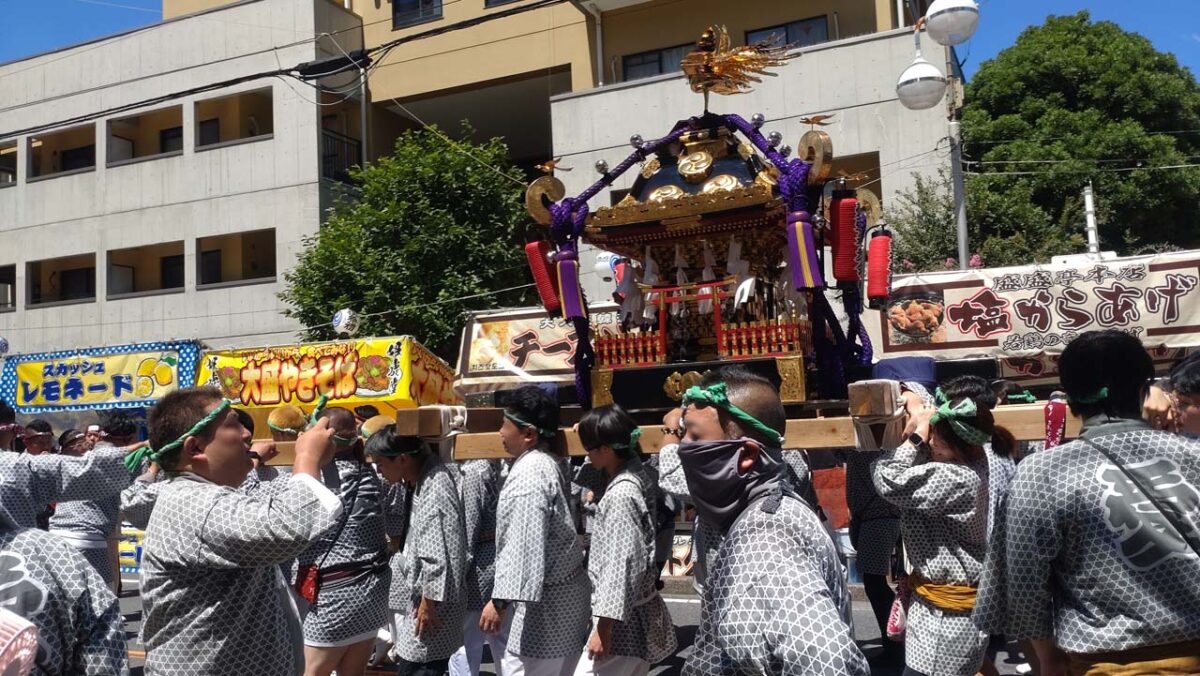
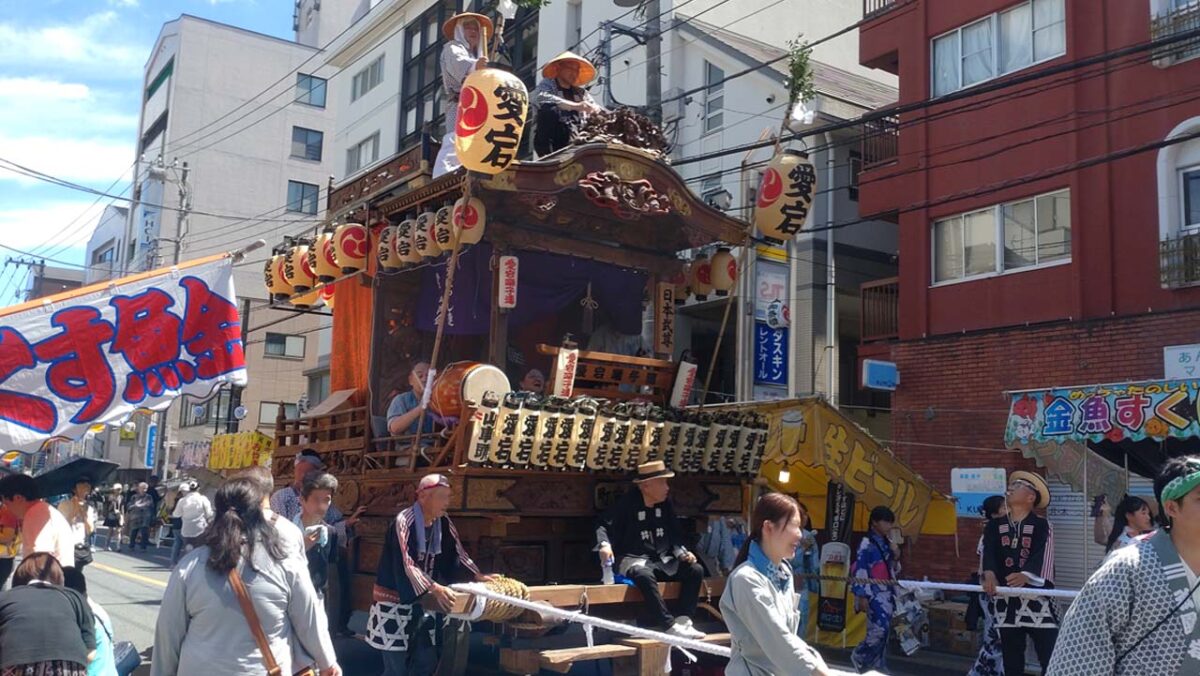
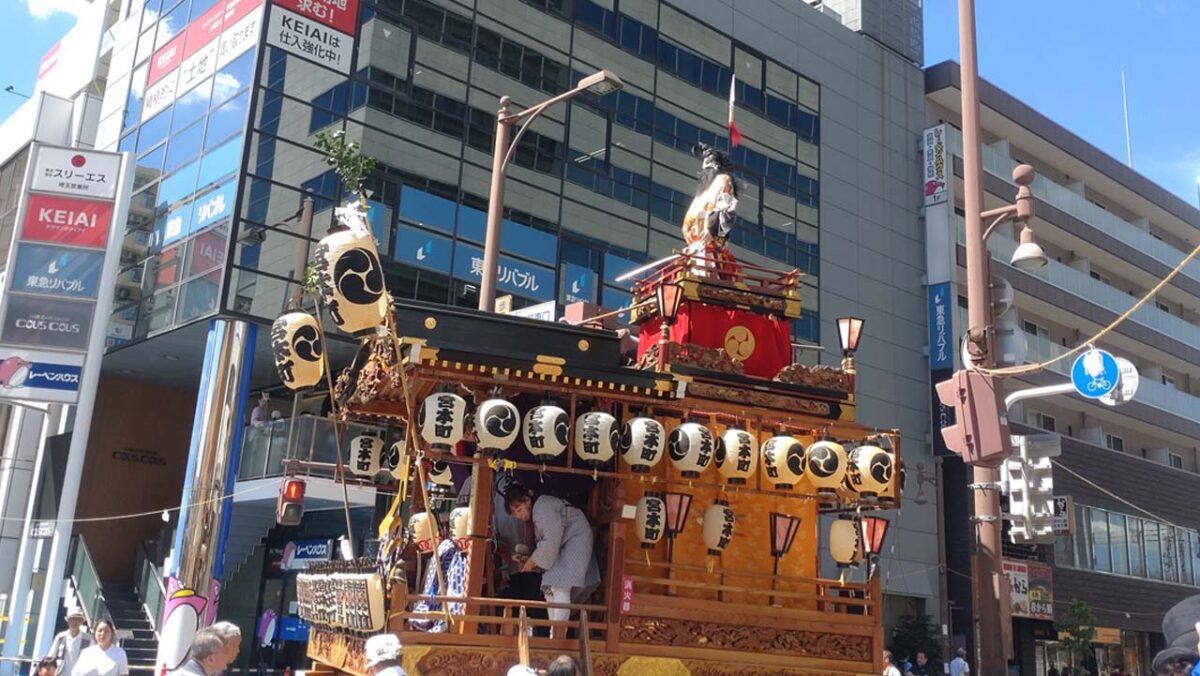
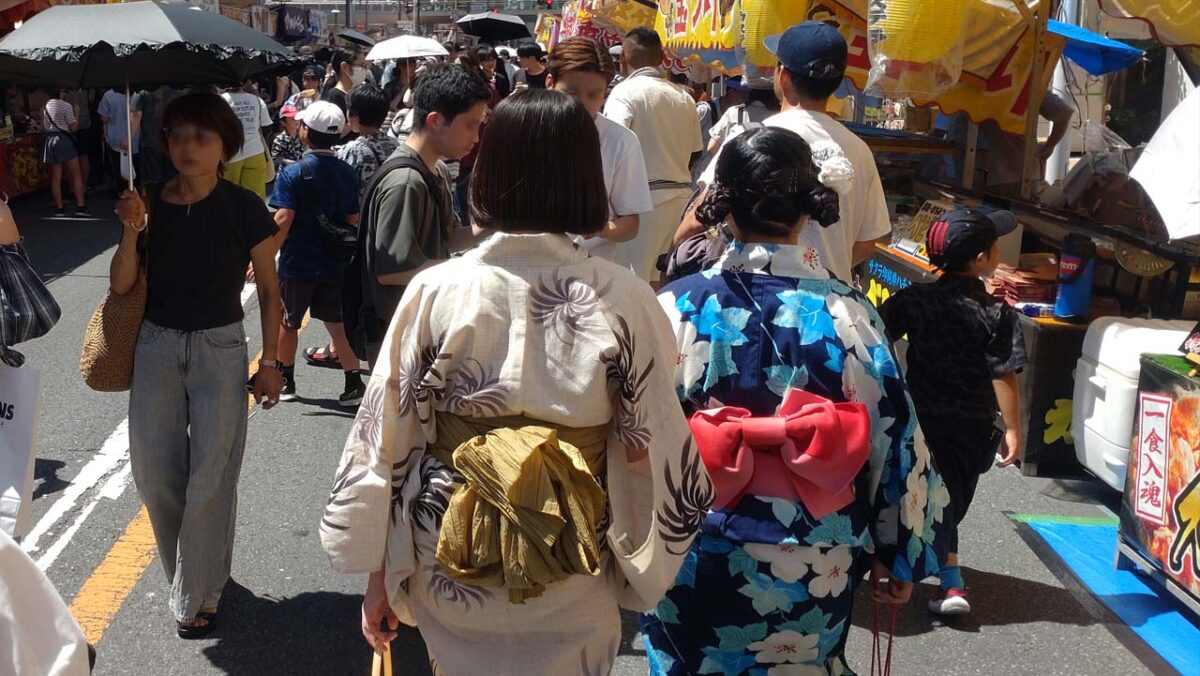
Festival Flavors and Family Moments
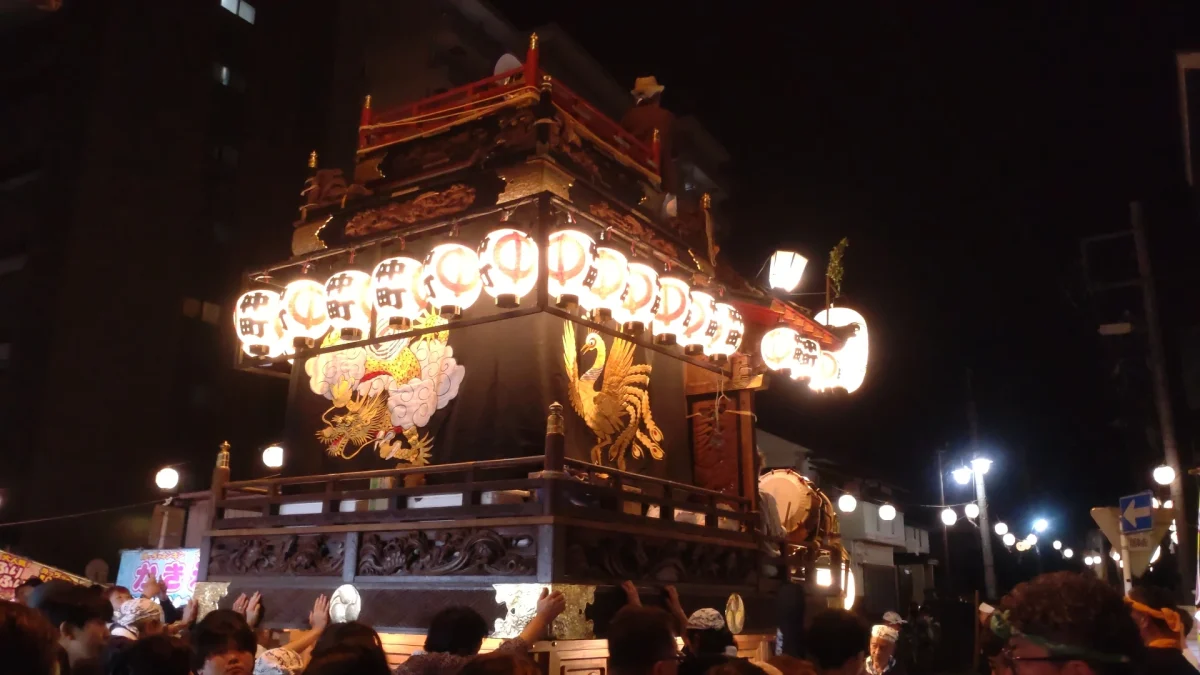
There’s a wide variety of food stalls, or yatai, offering classic festival treats like takoyaki (octopus balls), yakisoba (fried noodles), and kakigori (shaved ice), filling the air with delicious aromas. Beyond food, there are also games and lottery draws that kids love, along with traditional activities like kingyo-sukui (goldfish scooping) and yo-yo tsuri (yo-yo fishing), creating a scene full of smiles.
Our son had a school event and was planning to go to the festival with his friends later in the evening, so my wife and I enjoyed both lunch and dinner from the festival stalls.
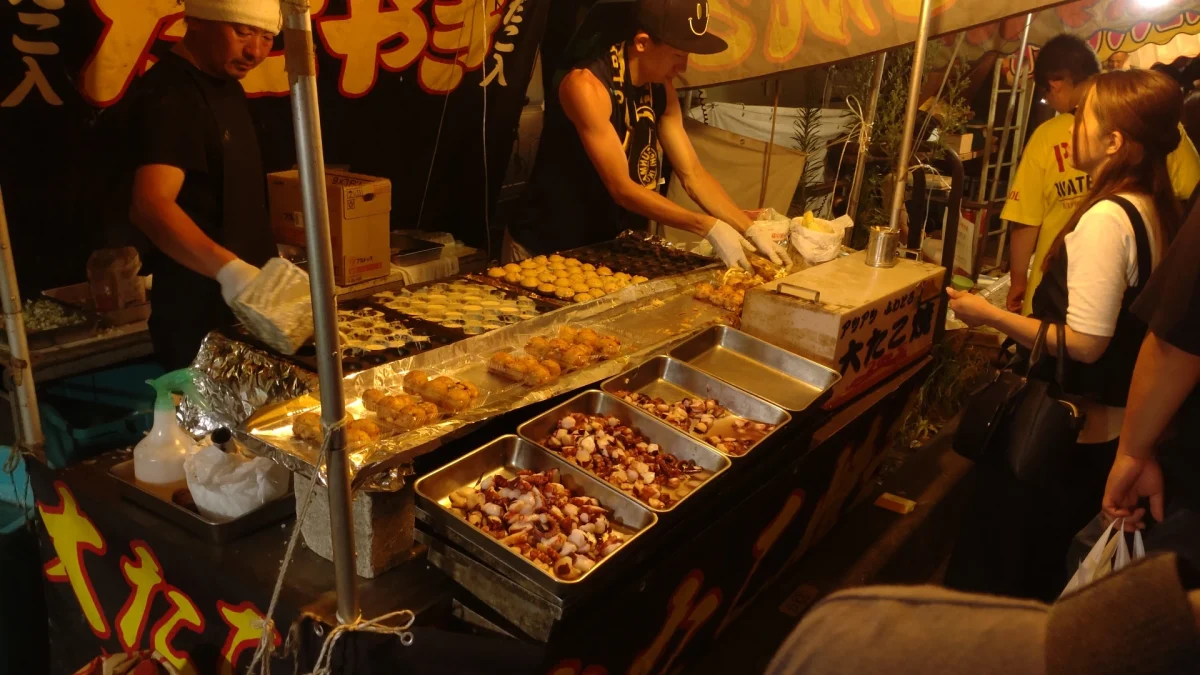
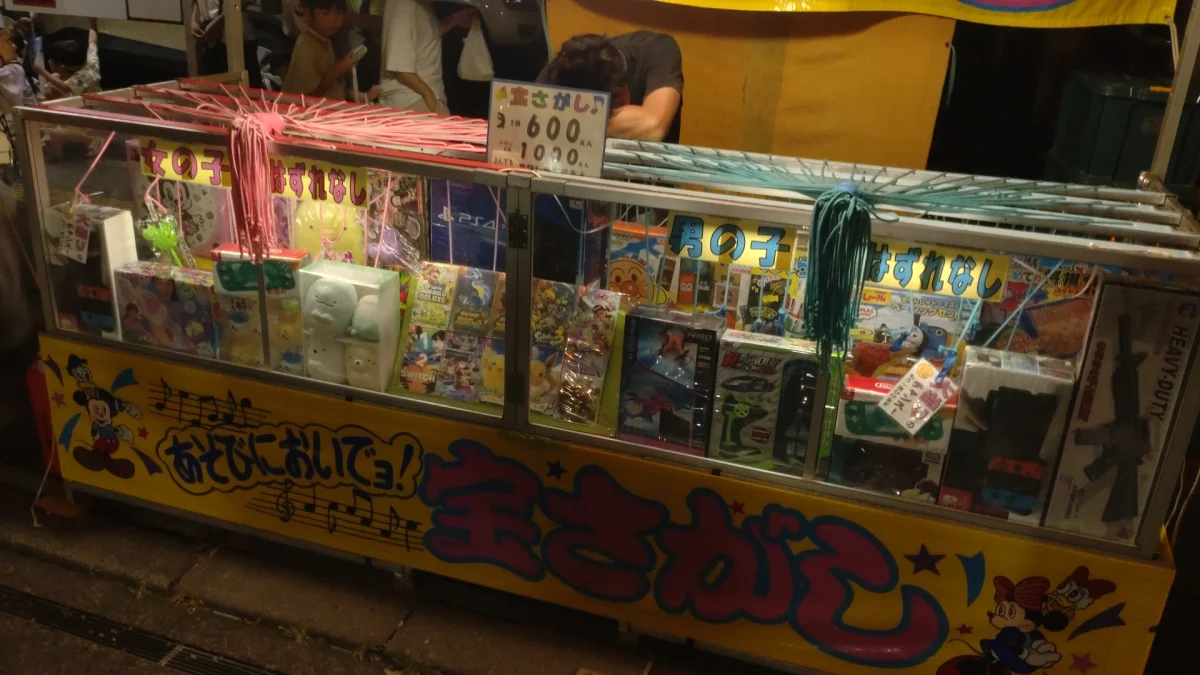
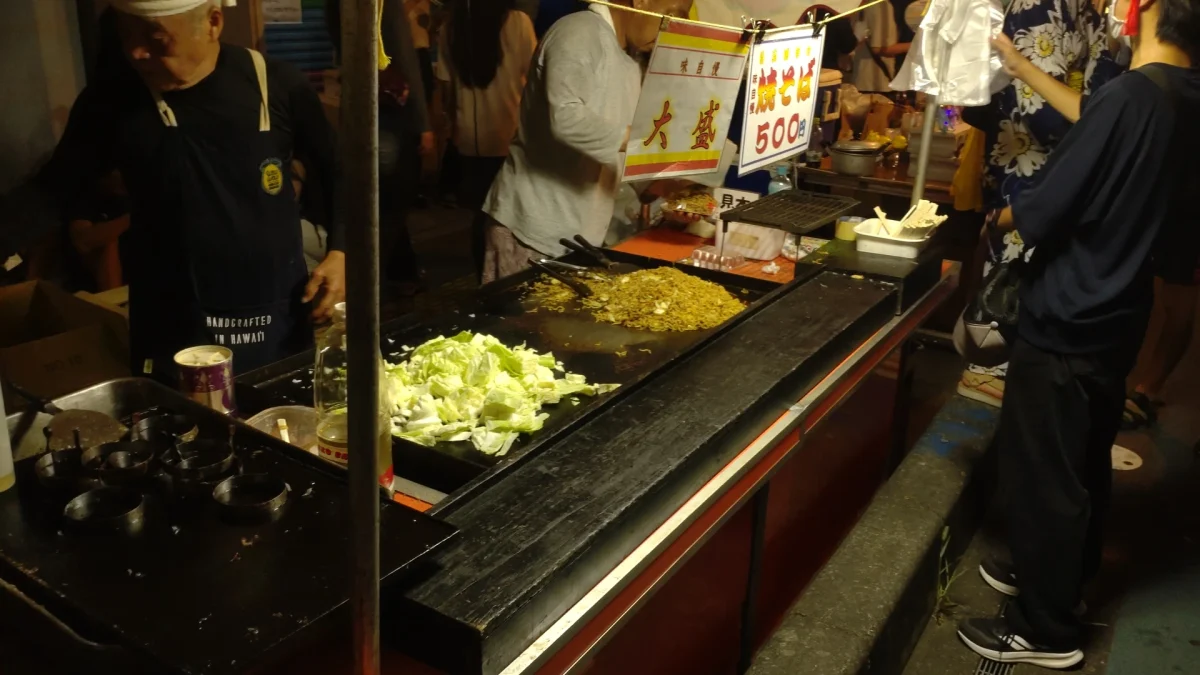
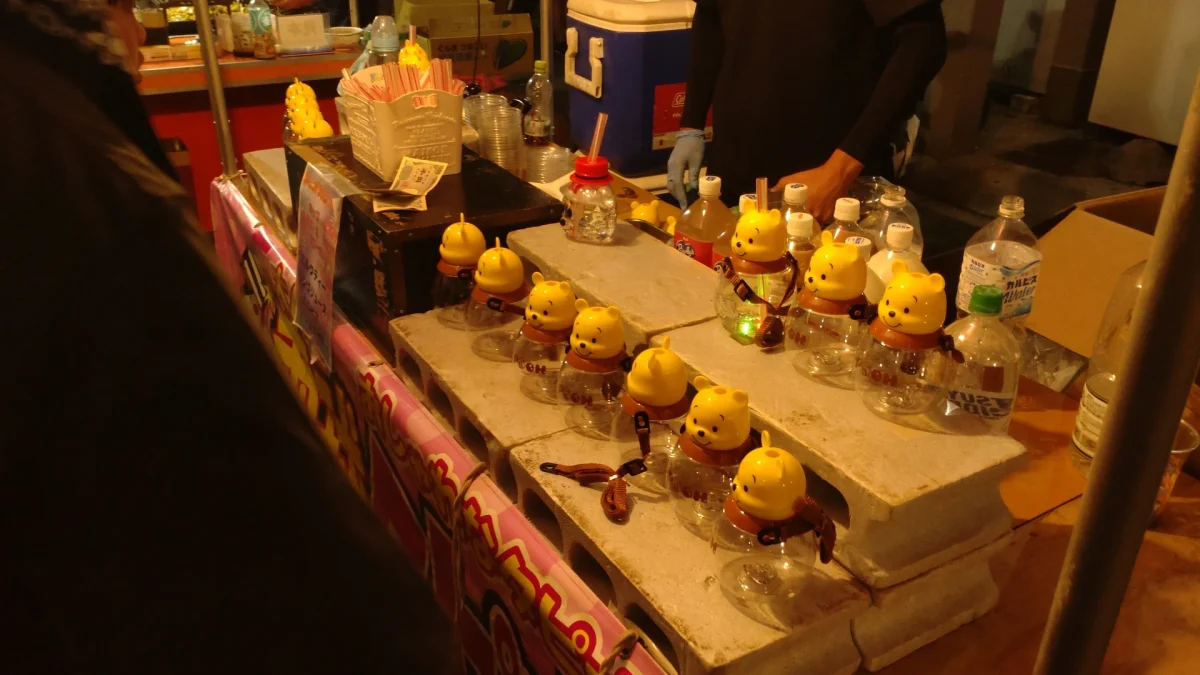
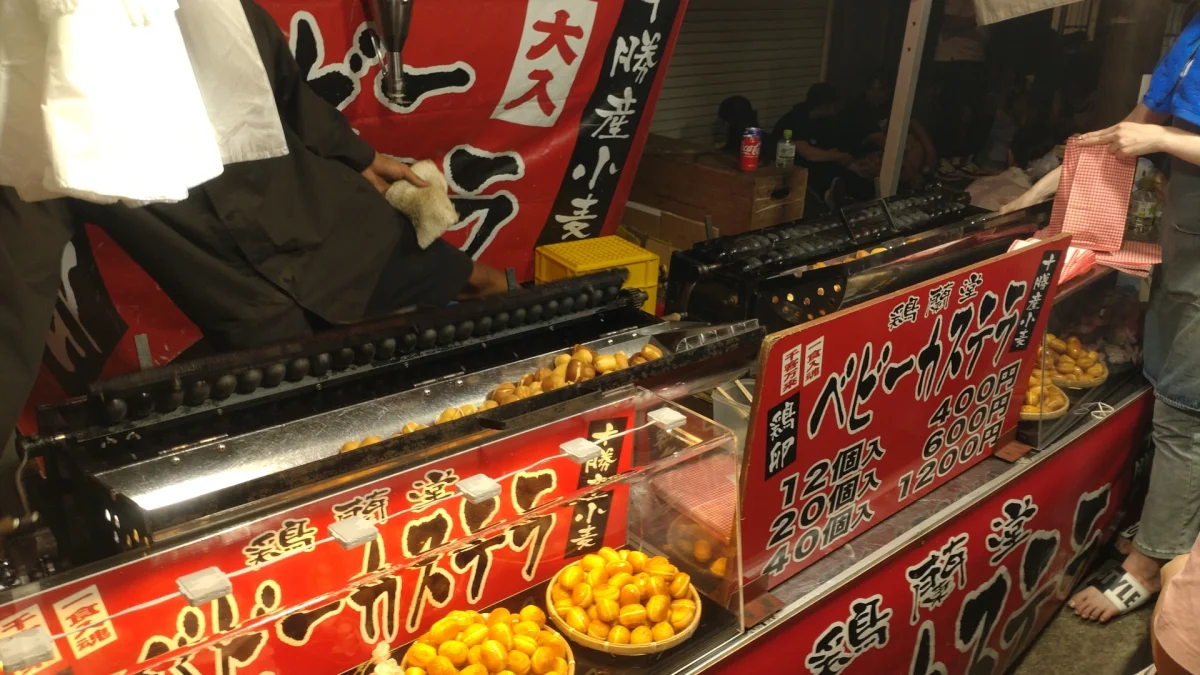
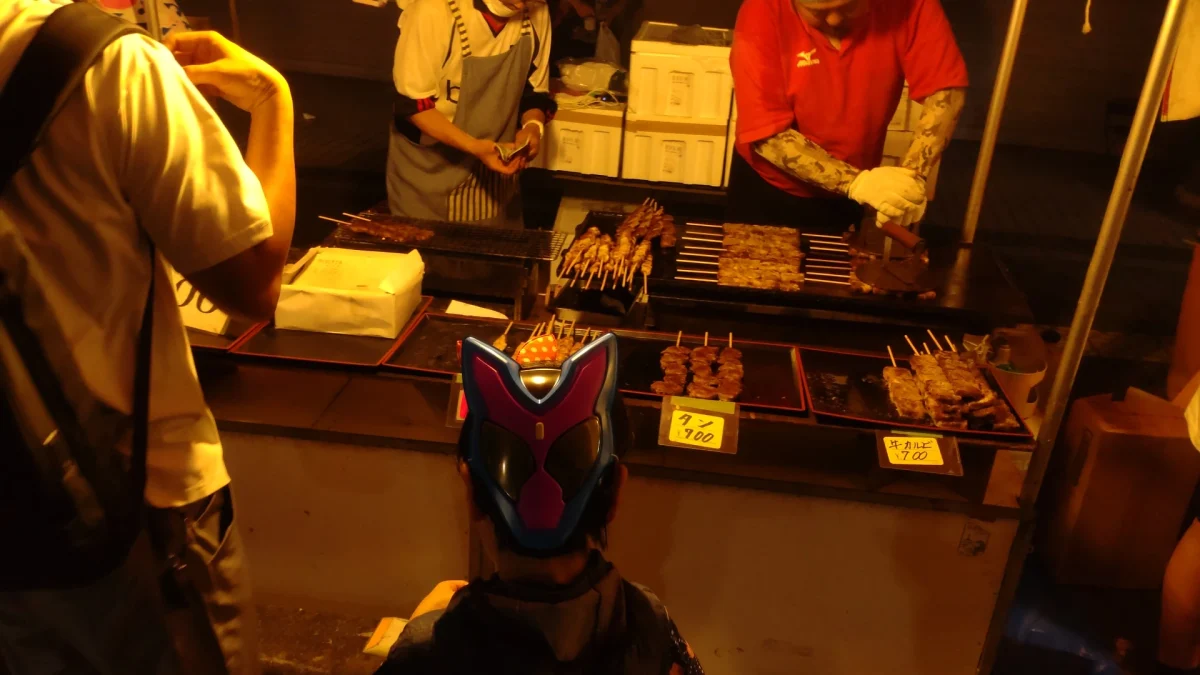
Not just in our area, but summer festivals are held all over Japan, offering a special opportunity to experience traditional culture. Each region has its own unique characteristics, and you’ll find local customs and performances at festivals centered around shrines and shopping streets. If you ever have the chance to visit Japan in the summer, I highly recommend experiencing a summer festival. I’m sure it will become an unforgettable memory.
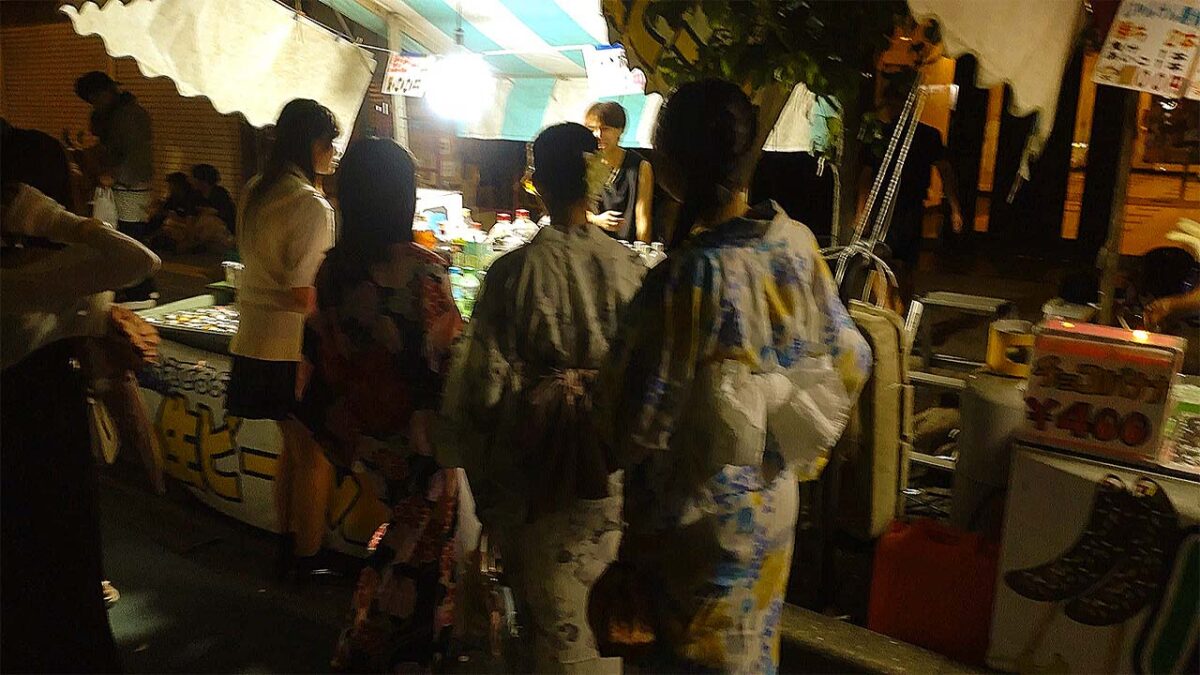
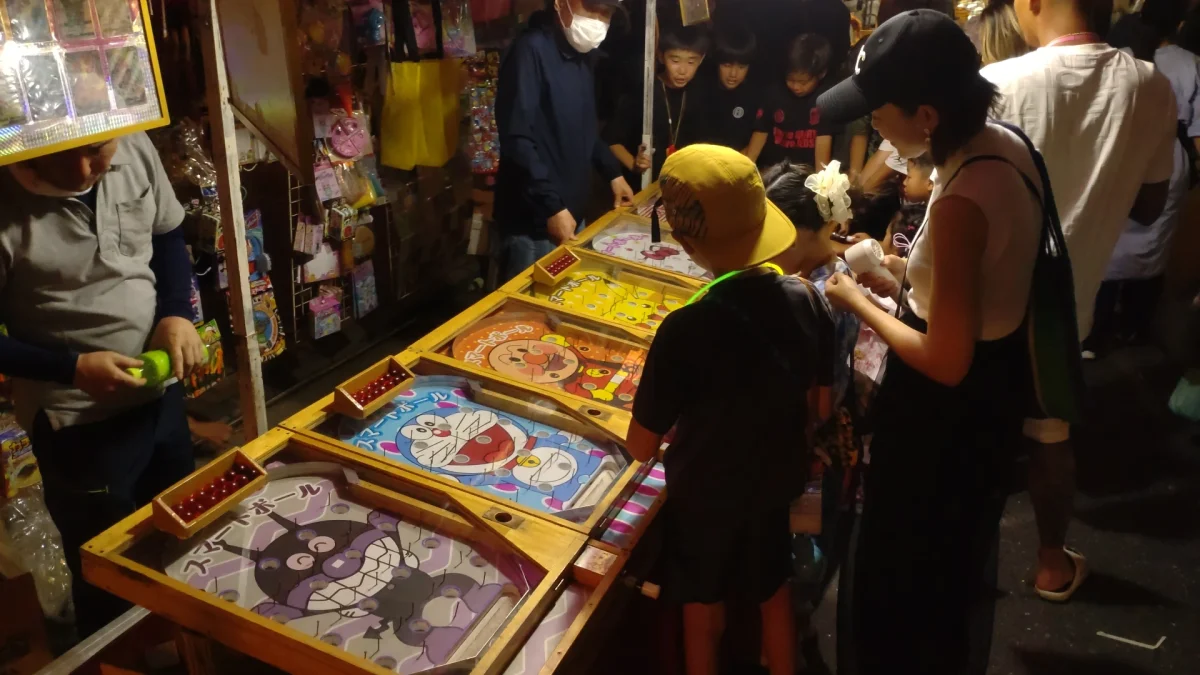
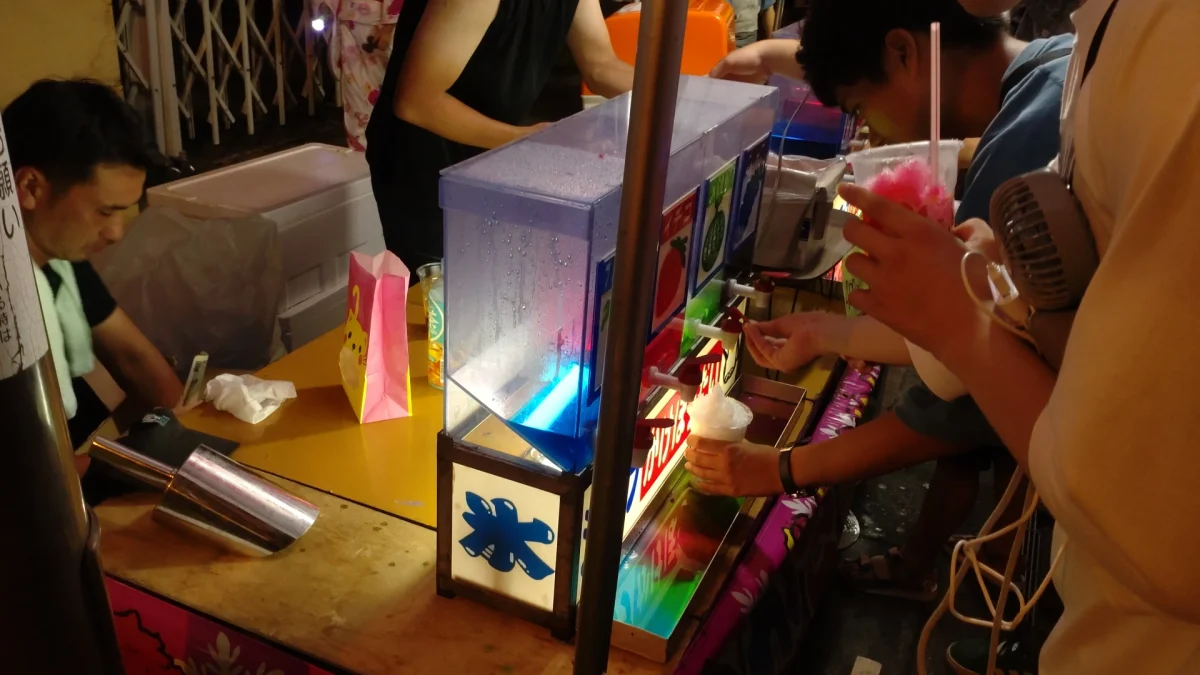
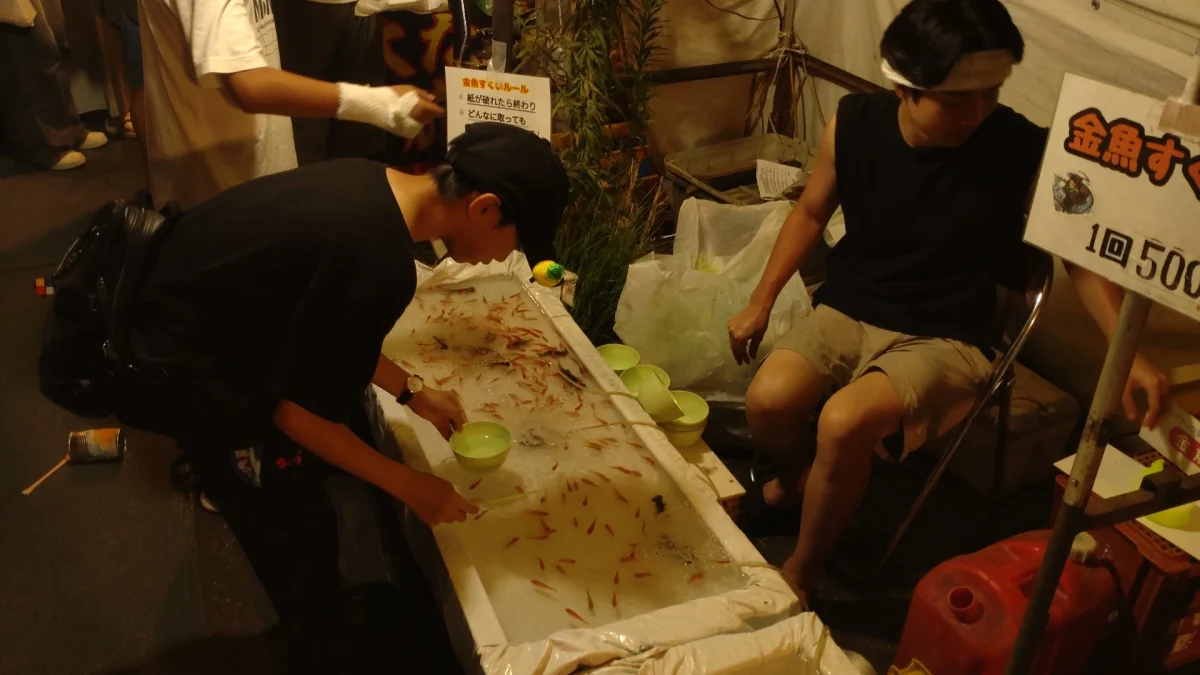
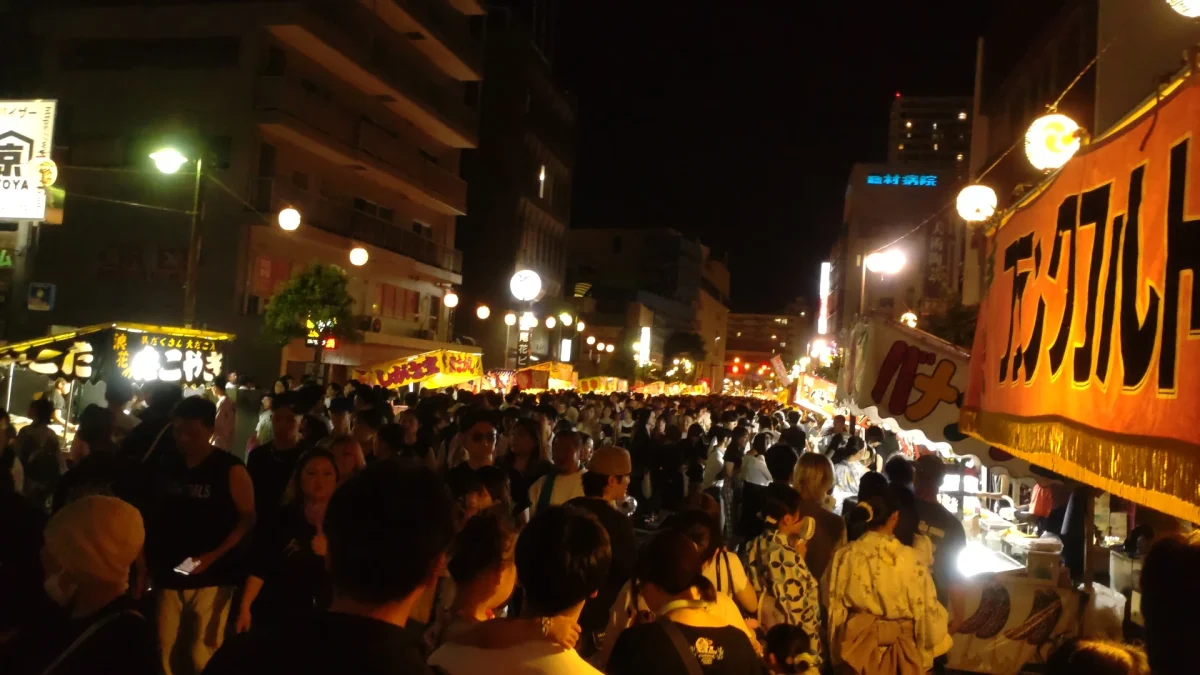
Japanese Summary
私の住む地域だけでなく、日本のいたるところで夏祭りが開催されます。
そこは、日本の伝統的な文化を体験する特別な機会にもなります。また、各地域にはそれぞれ独自の特徴があり、神社や商店街を中心に行われる祭りでは、その土地ならではの習慣や催し物を楽しむことができます。
もし夏に日本を訪れる機会があれば、ぜひ夏祭りを体験してみてください。きっと忘れられない体験と思い出になるでしょう。
Additional information:
- Dashi (山車): Large, elaborately decorated floats, often resembling small temples or stages, pulled through the streets during festivals. They often feature intricate carvings, tapestries, and sometimes even performers.
- Mikoshi (神輿): Portable shrines that are carried on the shoulders of participants during festivals. They are believed to temporarily house a deity (kami) during the procession, symbolizing the deity’s journey through the community to bless it. The swaying motion is often said to energize the deity or represent its joyous movement.
- Yatai (屋台): Food stalls or street vendors, commonly found at festivals and events, offering a wide variety of snacks and dishes.
- Takoyaki(たこ焼き)
Small round balls made from wheat batter filled with diced octopus, cooked in a special pan. Popular Japanese street food. - Lottery drawing / Raffle(くじ引き)
A game where people draw tickets or numbers to win prizes. - Yakisoba(焼きそば)
Fried noodles with vegetables and meat, seasoned with a savory sauce. Common festival food in Japan. - Baby castella(ベビーカステラ)
Small, round, soft sponge cakes often sold at festivals. - Kushiyaki (grilled skewers 串焼き)
Skewered and grilled meat, vegetables, or seafood. - Games
Fun activities and contests often found at festivals (e.g., ring toss, shooting games, pinball, etc.) - Kakigori (shaved ice かき氷)
Shaved ice dessert flavored with syrup, popular in summer. - Goldfish scooping(金魚すくい)
A traditional Japanese festival game where players use a paper scoop to catch goldfish from a pool.

